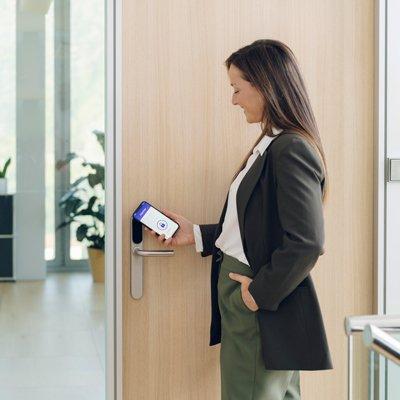 |
| University of Sussex selects Bosch Security Systems for CCTV installations |
The University of Sussex is a single site campus covering 280 acres on the outskirts of Brighton. Its CCTV system, specified originally in 2003 by the university in conjunction with specialist installers A.M Fire and Security, is a Bosch-based solution primarily based on dome cameras to cover critical areas across the entire site.
As Trevor Clifton-Sprigg of A.M Fire and Security explains: "There are 120 cameras in total, with 35 external cameras, most of which are domes from Bosch's EnviroDome and FlexiDome series. The system runs over IP, with the use of Videojet 10, Vip X1, Vip X2 and Vip X1600 video servers which migrate the existing analogue cameras to IP."
EnviroDomes are an integral part of Bosch's AutoDome range, featuring its innovative motion tracking capability Auto Track. Rugged in design and ideally suited for perimeter surveillance, car parks, and other similar outdoor applications, EnviroDomes feature Day/night cameras that automatically switch from colour to monochrome when light levels decrease to give extra sensitivity, whilst high-resolution cameras with optical zoom of up to 25x capture the finest details.
The cameras are controlled and monitored centrally at the University's security office in a building known as York House, with resilience monitoring at a separate location should a problem occur. "In addition," Trevor continues, "there are multiple client PCs at the individual buildings running VIDOS viewing software allowing each building user to view their own cameras and recordings."
"The recording equipment consists of two Dell servers (each capable of handling up to 64 cameras), which are connected to the University's Storage Attached Network (SAN), with Bosch VIDOS networked video recorder (NVR) software (which can handle an unlimited number of cameras and user) to manage the recordings. Each PC uses graphical maps for fast, simple, access to cameras around the site."
The University of Sussex received its Royal Charter in August 1961 and 40 years on, the University has become a leading teaching and research institution, renowned for its research excellence. Situated on the edge of the Sussex Downs, in a designated Area of Outstanding Natural Beauty, the University campus is described as a large, self-contained village, with lecture theatres, seminar rooms, libraries, accommodation, restaurants, bars, shops and sports facilities all within easy walking distance.
The security challenges facing the University are not untypical of a campus site. Antisocial and criminal behaviour is not uncommon and can take place in the car parks, within teaching buildings or the student union areas, and access to the campus is open to would-be thieves.
Reliable technology from Bosch Security Systems plays a principal role in a new CCTV installation at the University of Sussex as it extends the IP camera network to cover further areas of the university campus |
Roger Morgan, Head of Security at the University explains: "The University has a good rating for security in the National Student Survey and this will in part be due to the presence of our surveillance system which is used very successfully in conjunction with security offices on the ground. It helps us to monitor activities on the campus and prevent incursion from unwanted visitors."
"As an example of how beneficial the system is, recorded CCTV images (and work by our officers on patrol) led to the detention of some youths who were targeting our site and stealing bicycles from the cycle racks over a period of days."
"We constantly review the system to ensure that we have the best coverage in all the key areas. As a University, changes are often made to how the buildings are used, and new buildings being constructed always necessitate a review of internal and external surveillance. The latest change to the system involved the addition of cameras to extend surveillance to a newly-built student residence."
"The new building is effectively a satellite site on the other side of the main road, on the boundary of the campus. Cameras will cover the internal and external areas of the new site, including the subway between the campus and the halls of residence."
Roger was previously Head of Operations for Gwent Police and has extensive experience of CCTV from his work with local authorities to establish and develop systems. "The University has a good system," he continues, "and technically we cannot get much better."
"The only way we can improve the system is to develop operationally - become more proactive in our approach to monitoring rather than reacting to an incident. There are many benefits of this system that I look forward to exploiting, like the possibility of facial recognition technology to spot known people who might target the university as walk-in thieves. The only limitations we might currently face come from not knowing what the system is capable of."


















